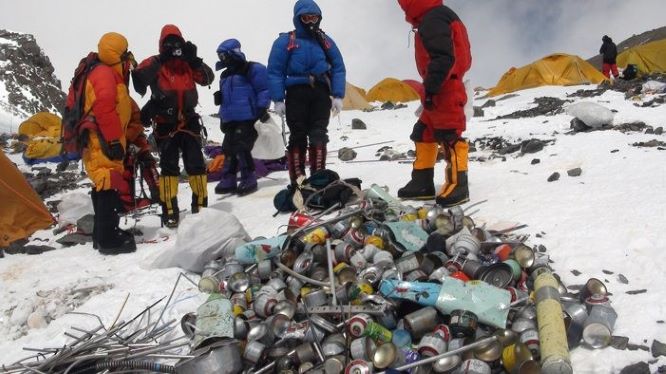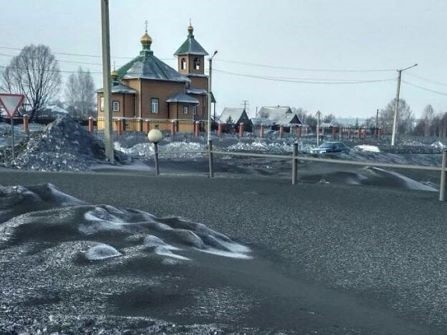Mt Everest Clean Up Team Recovers 3 Tonnes of Rubbish

A 14-member team sent by the Nepalese government to tidy up Mount Everest has so far collected three tonnes (3.3 US tons) of garbage including cans, bottles, plastic and discarded climbing gear. In what is becoming an annual ritual, the clean up is done before the start of climbing season each year.
“The clean-up campaign will be continued in the coming seasons as well to make the world’s tallest mountain clean. It is our responsibility to keep our mountains clean,” said Dandu Raj Ghimire, the head of Nepal’s tourism department.
Mount Everest has suffered increasing pollution over decades, with climbers leaving behind not only garbage, but also fluorescent tents, empty gas canisters and human excrement.
As the numbers of commercial trekkers and adventure holiday enthusiasts visiting the peak soar — a record 807 people reached the Himalayan summit in 2018 — so too has the amount of trash left behind.
In case you wonder why trash is left behind at all, then the simple answer is weight. At that height, every kg of weight slows down climbers, and load carrying capacity is severely limited in any case. That means, things like oxygen bottles etc are usually discarded after use, to keep the weight low. Climbers assume that the fee they pay to get a shot at climbing the world’s highest peak will cover some of their transgressions too. For the record, the typical cost of climbing the peak is upwards of $25,000, depending on the kind of support and equipment one uses and hires.
Environmental damage
The once pristine landscape of snow and ice is now littered with tents, empty oxygen tanks, climbing equipment, food containers, and human waste left by the nearly 5,000 mountaineers who have followed in the footsteps of Edmund Hillary and Tenzing Norgay, the first people to reach the 8,848-meter (29,000 feet) summit in 1953.
The “Everest Cleaning Campaign” began on April 14 and will reportedly run for 45 days. The team has been set a target of bringing back 10 tonnes of trash. Team members will climb up as high as Camp 4, situated at 7,950 meters (26,080 feet), in their search for garbage.
The campaign coincides with the opening of the spring climbing season, which will see hundreds of mountaineers trying their luck on the 8,248-meter peak, accompanied by more than 1,000 climbing support staff.
Pollution through garbage is not the only environmental threat faced by the mountain: Scientists warned on Tuesday that global warming is also affecting its appearance, with the Khumbu Icefall on Everest’s Nepali side likely to disappear within decades.
Melting glaciers on the mountain have also exposed more trash and even human bodies that have accumulated there over the years. Nearly 300 people have perished on the mountain.
A new report looking at the Hindu Kush and Himalayan mountain range found glaciers there are melting rapidly and two-thirds could disappear if CO2 emissions are not cut rapidly. Research by the International Center for Integrated Mountain Development measured a retreat of nearly 20 meters a year for Everest’s Khumbu glacier, increasing the risk of avalanche.
Image courtesy: Everest Summiteers Association






